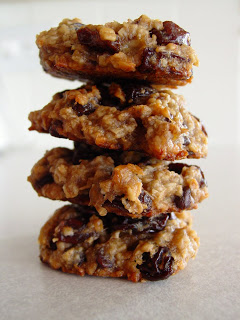The American Cancer Society (ACS) estimates that today, one in six men will encounter prostate cancer in their lifetime. It’s the combining factors like processed foods and pollutants that are helping these number rise, making prostate cancer more common. Symptoms can be as mild as trouble urinating and as severe as death from metastasized cancer. While these facts may sound discouraging, there are several methods of prevention one can take. If we combine alternative medicine with nutrition and a low-stress lifestyle, we can drastically lower the chances of prostate cancer.
What is a prostate?
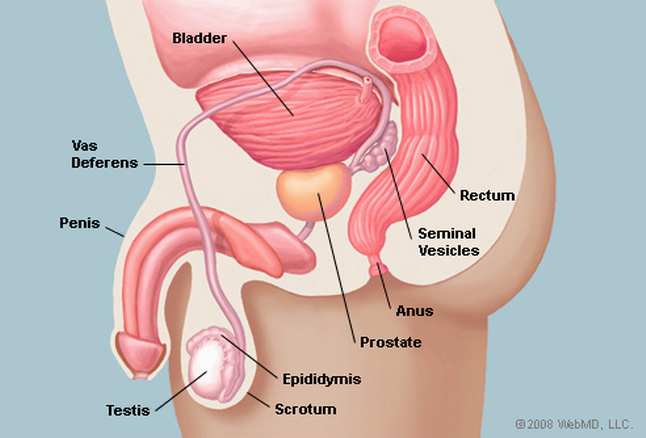
The prostate is an exocrine gland in the male reproductive system. It’s located under the bladder and in front of the rectum. The urethra goes through the prostate, secreting urine and semen. The prostate muscles fibers contract and release, controlling urine flow. The prostate also adds a white milky substance to semen when they are secreted from the testis. This fluid protects and nourishes the sperm during “transport”.
When should one get checked for prostate cancer?

The ACS recommends that men start getting regularly checked for prostate cancer after the age of 50… even earlier if you’re at a higher risk. Higher risks would include African Americans, those with a family predisposition, the obese, and the elderly. Initial tests for prostate cancer include a prostate-specific antigen test (PSA) and/or a digital rectal exam (DRE), either being ran with your doctor annually.
Prostate cancer begins with prostatic intraepithelial neoplasia (PIN), which cause tiny alterations in the shape and size of prostate gland cells. Adenocarcinoma is when prostate cancer starts in these gland cells.
Several symptoms could hint that prostate issues are at hand. There could be trouble urinating or total urinary incontinence. There may be a decrease in the force of urine stream. There can also be erectile dysfunction and blood present in the semen. Growth in prostate cancer also causes pelvic discomfort and bone pain.
So why are the rates for prostate cancer in the US so high? Compared to Asian countries where the rates are drastically lower, it could be due to a combination of factors. The most significant factor is likely attributed to diet. One example is the consumption of dairy and beef products.
What foods should one avoid to promote prostate health?
After a certain age, our bodies produce an antibody against milk. 70% of people stop producing lactase (the enzyme that digests milk sugar) once weaned. Non-organic milk is high in IGF-1 (insulin-like growth factor) since milk is produced during the pregnancy of the cows. 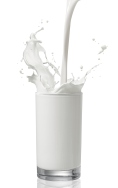 When IGF blood levels increase by 8%, your risk of prostate cancer increases seven times! These cows are also pumped with BGH (bovine growth hormone) to yield more product. These hormone-disrupting chemicals stimulate the prostate (and breast cells) to grow by hormonal messages. When we have high levels of estrogen (making things grow) and not enough progesterone (keeps cells healthy) to balance, mutating growth can occur. Too much stress raises cortisol, which also competes with progesterone. The best way to avoid the harmful effects of GMO beef and dairy products, buy organic! Then you have the relief of knowing your product is herbicide and pesticide-free, plus there is no practice or use of BGH.
When IGF blood levels increase by 8%, your risk of prostate cancer increases seven times! These cows are also pumped with BGH (bovine growth hormone) to yield more product. These hormone-disrupting chemicals stimulate the prostate (and breast cells) to grow by hormonal messages. When we have high levels of estrogen (making things grow) and not enough progesterone (keeps cells healthy) to balance, mutating growth can occur. Too much stress raises cortisol, which also competes with progesterone. The best way to avoid the harmful effects of GMO beef and dairy products, buy organic! Then you have the relief of knowing your product is herbicide and pesticide-free, plus there is no practice or use of BGH.
Another dietary modification one can make towards a cancer and disease-free lifestyle is changing to an alkaline diet. Dr. Otto Warburg was awarded the Nobel prize in 1931 for discovering the benefits of eating alkalinity-promoting foods. Basically, cancer and disease thrive in an acidic environment. Cancer thrives by fermenting sugar, increasing acidity and decreasing oxygen for our healthy cells. What happens when our healthy cells don’t have enough oxygen to live? They grow weak, defenseless, and can die, letting disease and cancer take over. So if the body were to become more alkaline, healthy cells will have more oxygen to thrive while cancer cells become dormant and die. Foods that cause acidity in the body can include white flour and sugar, coffee and sodas, meat, eggs, and dairy. But all fresh vegetables are know to promote alkalinity! Also remember that sugar facilitates cancer growth.
Fried, browned, and burnt foods should also be avoided, since they are a source of free 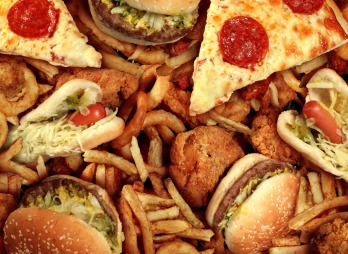 radicals (leads to damage of healthy cells). High antioxidant foods help prevent this damage from happening. There are a wide range of vitamins, minerals, amino acids and phytonutrients that provide a strong cancer defense. The trick is to consume these nutrients from whole foods verses just supplements, since these nutrients combined provide a synergistic effect. Certain nutrients can whisk carcinogens out of cells, or prevent hormones from latching onto cells. They cut off the blood supply to tumors, or interfere with the creation of carcinogens.
radicals (leads to damage of healthy cells). High antioxidant foods help prevent this damage from happening. There are a wide range of vitamins, minerals, amino acids and phytonutrients that provide a strong cancer defense. The trick is to consume these nutrients from whole foods verses just supplements, since these nutrients combined provide a synergistic effect. Certain nutrients can whisk carcinogens out of cells, or prevent hormones from latching onto cells. They cut off the blood supply to tumors, or interfere with the creation of carcinogens.
What cancer-fighting nutrients promote prostate health?
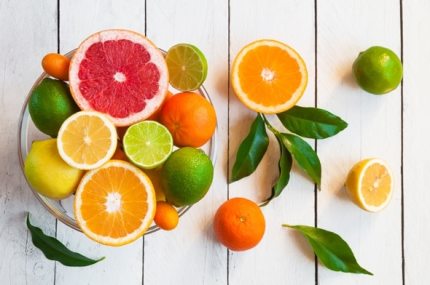
Starting with vitamins, most of us are aware that vitamin C will boost our immune system, creating a stronger defense against disease. Vitamin C is water soluble, protecting our fluids. When combined with vitamin E, a fat soluble vitamin, the tissues are protected as well! Vitamin E is also a strong antioxidant, fighting free radicals that cause harm to the body.
Studies show that about 50% of all men with prostate cancer are deficient in zinc. Another important mineral to be mindful of is selenium, which can be found in seafood and sesame seeds. Selenium in a vital piece of the antioxidant enzyme glutathione peroxidase that fights prostate cancer. The recommended dose to show these benefits is 200-300mcg/day.
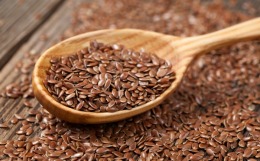 Amino acids like glycine provide antioxidants that fight cancer. Glycine is in high protein foods like fish, meat, and beans. The amino acids in flax seeds are strongly beneficial against prostate cancer as well! The flax lignans bind to male hormone receptors and promote the elimination of testosterone. This slows the rate of cancer cell growth and increases the death rate of cancer cells after about 34 days. You can get the recommended 30g a day by just grinding up (fresh) and consuming 2tbsp of flax seeds a day, which can lower serum testosterone by 15%.
Amino acids like glycine provide antioxidants that fight cancer. Glycine is in high protein foods like fish, meat, and beans. The amino acids in flax seeds are strongly beneficial against prostate cancer as well! The flax lignans bind to male hormone receptors and promote the elimination of testosterone. This slows the rate of cancer cell growth and increases the death rate of cancer cells after about 34 days. You can get the recommended 30g a day by just grinding up (fresh) and consuming 2tbsp of flax seeds a day, which can lower serum testosterone by 15%.
Of all the nutrients that help build up the body’s defense against disease, phytonutrients are the body’s most crucial allies. They not only fight against cancer but act as antioxidants. The immune system is enhanced, the body detoxifies, hormones are balanced, and overall youth is promoted. These phytonutrients come by the thousands, synergistically combined in whole (and primarily raw) foods. They can hinder cancer at all different stages. One of the first phytonutrients I will introduce to you is piperine (found in black pepper, chiles, paprika, and cayenne) which helps the body absorb more nutrients. So spice it up to open the door for these amazing cancer-fighting nutrients:
Flavonoids – prevent cancer-causing hormones from latching onto cells (found in citrus, berries)
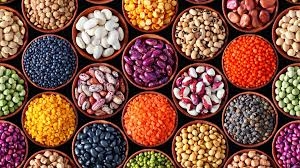
Isoflavones – cuts off blood flow to tumors (legumes), only absorbable when fermented (tempeh, miso)
Saponins – prevent cancer cells from multiplying (kidney and garbanzo beans, lentils)
Limonene – stops progression of cancer, destroys and dismantles cancer, fights tumors, most effective at initiation stage, decreases cell to cell miscommunication (citrus fruits, spices, essential oils especially grapefruit, tangerine, and orange)
Astaxanthin – most powerful antioxidant, lowers cancer risk (algae, salmon, trout, shrimp, krill oil, plankton)
Epicatechin and polyphenols– decreases cancer risk (dark chocolate, red wine, tea, soy beans, apples)
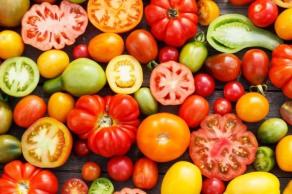
Lycopene – slows growth of prostate (and breast) cancer, stunts growth of renal cell carcinoma, cancer preventative, more potent when cooked (tomatoes, watermelon, papaya, asparagus, red cabbage, grapefruit, mango, carrots, guava)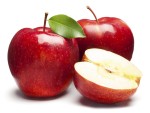
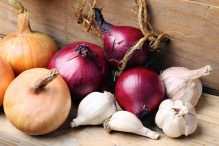 Quercetin – prevents/stops growth of prostate cancer cells by blocking the androgen activity in androgen-responsive human prostate cells (onion, garlic, apple skins, dark berries)
Quercetin – prevents/stops growth of prostate cancer cells by blocking the androgen activity in androgen-responsive human prostate cells (onion, garlic, apple skins, dark berries)
Besides eating the foods containing these cancer-fighting phytonutrients, I also recommend eating whole foods like dark green leafy and cruciferous vegetables, artichoke hearts, beets, brown rice, oranges, lemons, limes, and dandelion.
What supplements also fight prostate cancer?
Pectin is another strong cancer-fighter, which you can obtain in modified citrus pectin (MCP). It’s a supplement you can take that’s obtained from the peel and pulp of citrus fruits. They are short, non-branched, galactose-rich carbohydrate chains. Galectins are proteins on the surface of cancer cells that attach to glucose (remembering sugar facilitates cancer growth). Therefore, more galectins make it easier for cancer cells to clump and metastasize. MCP in going to bond to these harmful galactins, preventing cancer from clumping and spreading. More specifically, it prevents metastasis of breast, prostate, lung cancer, and melanoma. For prostate cancer, it can helps decrease PSA levels. The recommended dose for this benefit is 6-30g/day.
Betasitosterol is a phytonutrient one can consume from plant fats such as avocados, soybeans, peanuts, pecans, saw palmetto, and pumpkin seeds. It can also be taken as a supplement to encourage prostate health. Betasitosterol can be used to treat prostate disorders like an enlarged prostate, or can alleviate some symptoms of prostate cancer. How does it do this? The main causes of a prostate disorder are again and hormones. When testosterone is converted to dihydrotestosterone (DHT), prostate cells increase since division is stimulated. Therefore, and increase in DHT leads to an enlarged prostate gland. Betasitosterol inhibits the enzyme 5-alpha reductase, which blocks the conversion of testosterone into DHT. This plant fat also helps lower the bad LDL cholesterol.
What are some alternative medicine options to help?

Besides fueling the body with everything we’ve discussed, it’s always important to remember to relax. Stress depletes our energy on every level and weakens our immune system. Healthy outlets for stress such as art/music therapy, exercise, dance, yoga or meditation help create balance on all planes. Ideally if we were to create a lifestyle that encouraged our health and well-being, we’d rid ourselves of the unnecessary stresses and toxic people… focusing our energy and intention on being well and happy.
Sources for more information…
McCaffrey CDC, Dee. The Science of Skinny. Da Capo Press, 2012.
Holford, Patrick. The New Optimum Nutrition Bible. The Crossing Press, 2004.
Murray ND, Michael, et al. The Encyclopedia of Healing Foods. Atria Books, 2005.
http://www.medicalnewstoday.com/articles/
http://www.webmd.com/urinary-incontinence-oab/picture-of-the-prostate#1
https://drcolbert.com/beta-sitosterol-supports-prostate-health/
http://www.mayoclinic.org/diseases-conditions/prostate-cancer




